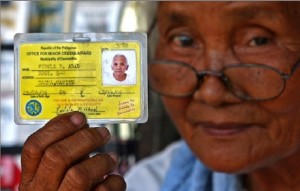Second in a series
Soriano noted that Japan already has a top-heavy population structure, and its government is now concerned with providing income security for its older citizens.
He added that Singapore, which had a relatively young population only 40 years ago, is now rapidly following Japan’s population pattern. China’s population structure, Soriano analyzed, resembles almost a cube, so the goal has been to maximize the value of its large, but soon-to-be-shrinking, workforce.
India, for its part, is experiencing the opposite of Japan. Its predominantly young population is presenting daunting challenges to the socioeconomic and political structure. The current challenge there is how to provide enough jobs and housing. In the United States, 10,000 people are now retiring each day.
“All of these countries, including the Philippines, are not prepared to manage a growing population of older people who will be experiencing increasing longevity due to the wonders of science,” Soriano observed.
“In 20 years, the Philippines is expected to shift from the current triangle of Gen X and Y-dominant population to a mid-heavy 50 and older population. In this lifetime, we will see the formation of a belly-shaped population,” Soriano quipped.
“Is the Philippines ready to absorb the so-called retirement exodus? Do we have a very clear retirement policy for Asians, Americans, Europeans? Have we defined our target markets very well? Do we have a powerful and distinct value that will compel these retirees to skip Malaysia and make the Philippines their second home?”
Reaping benefits
He reported that Malaysia’s Second Home program has been in existence for a long time and now the country is reaping the benefits of mostly Indonesian and Singaporean and even Filipino businessmen transitioning to become retirees there.
“Last year, more than 20-million tourists visited Malaysia and a fraction were converted to long-staying guests (on Special/Permanent Resident Status). You can just imagine close to 52 subindustries—from real estate products to a myriad of related facilities—benefiting from every new resident deciding to stay in the country.”
Soriano urged, “We must rethink the changing perceptions about retirement, employment and aging as it requires a sustained, concerted effort from all stakeholders. Government, business, labor, NGOs, the media and individuals all have a role to play, and if we want to exploit this retirement warp, we must move fast as this universal market is driving countries to rethink outdated retirement systems.”
He added that we must prepare for the deluge of kababayans who have spent their entire working life overseas, “the so-called Baby Boomers or those who were born after WWII.”
Soriano said: “In my talks abroad, they have expressed their preference of spending their remaining productive years in the Philippines. There are fears, though, of the usual concerns about peace and order, medical coverage, medical facilities and retirement-friendly communities.
The question is, are there ideal places to retire in the Philippines right now?
E-mail your take on the matter to tsalazar@inquirer.com.ph.


